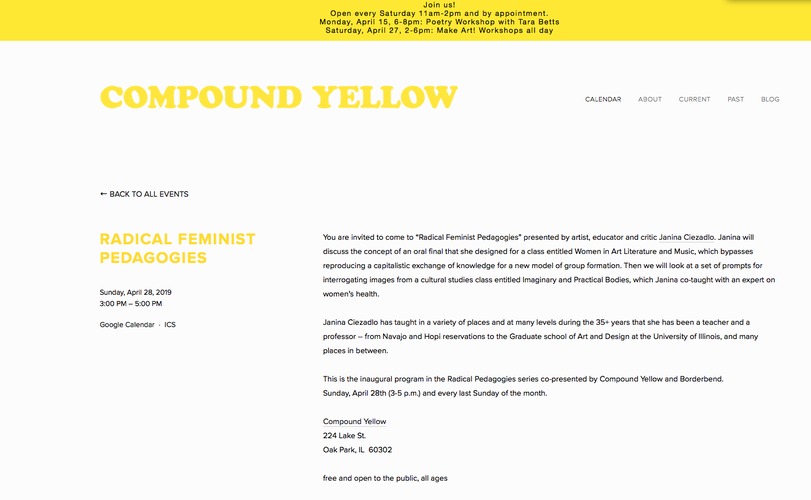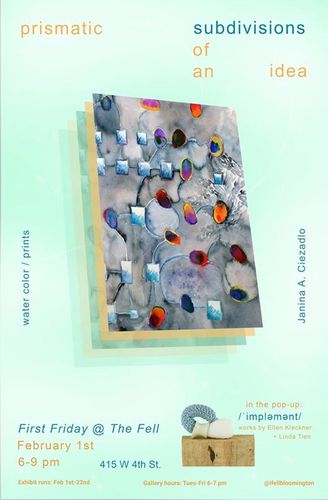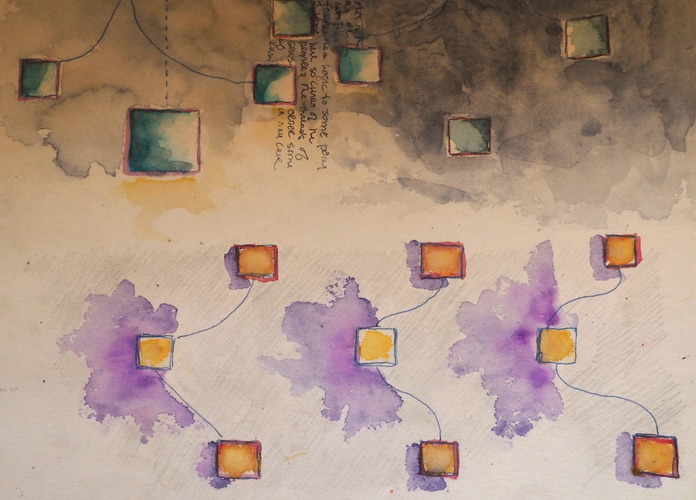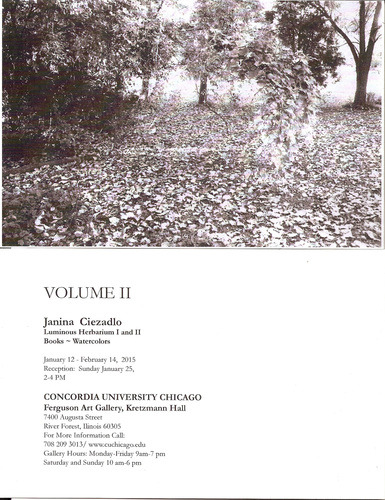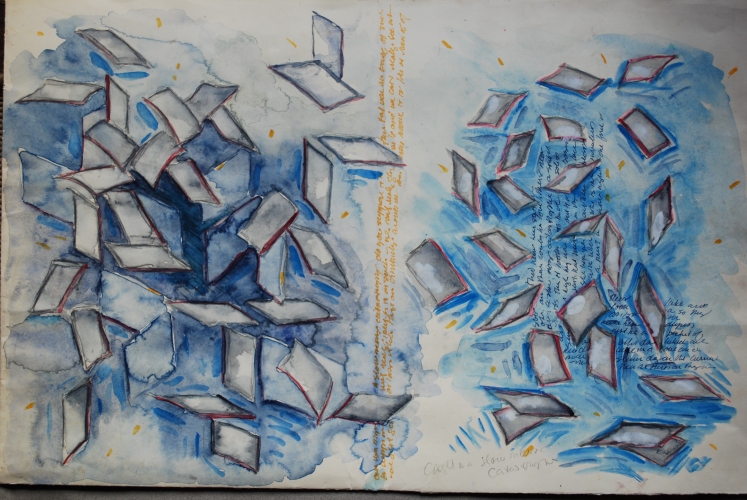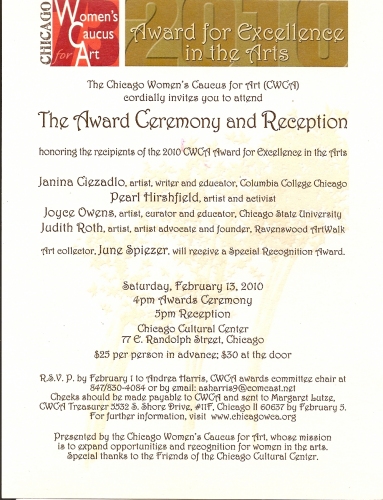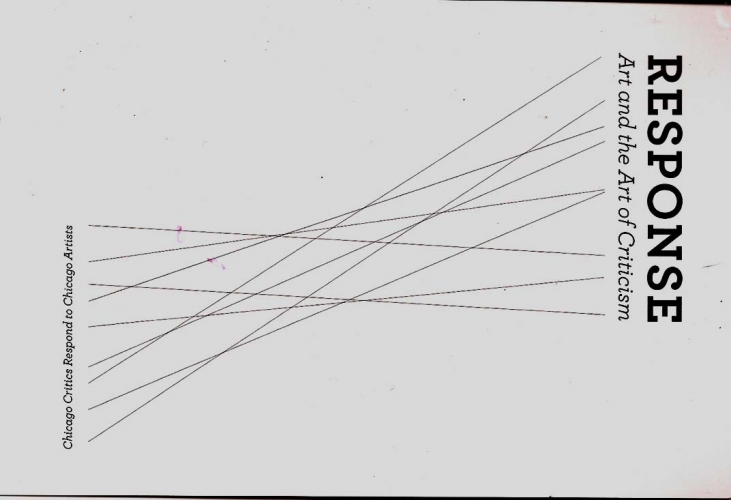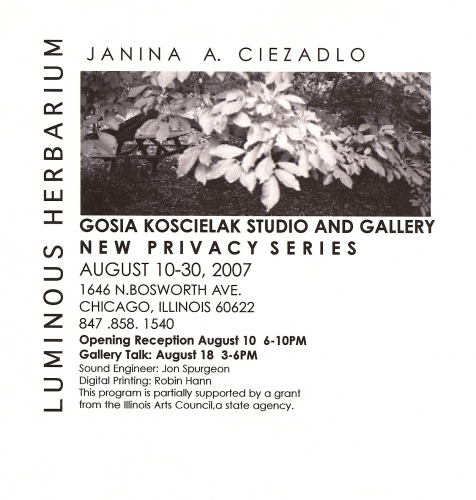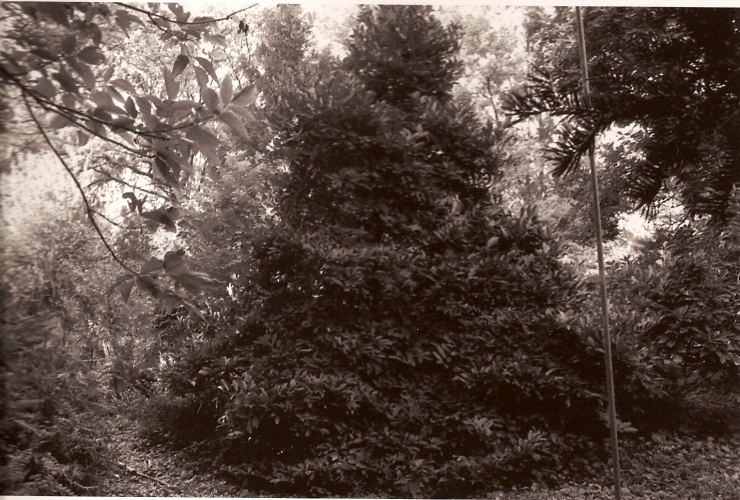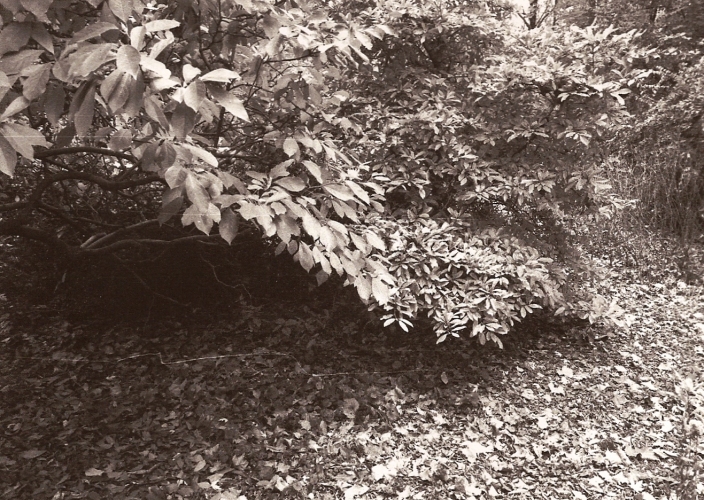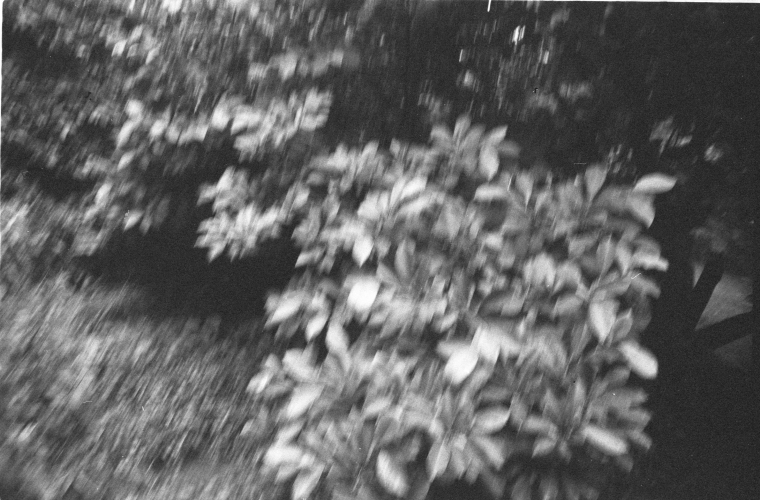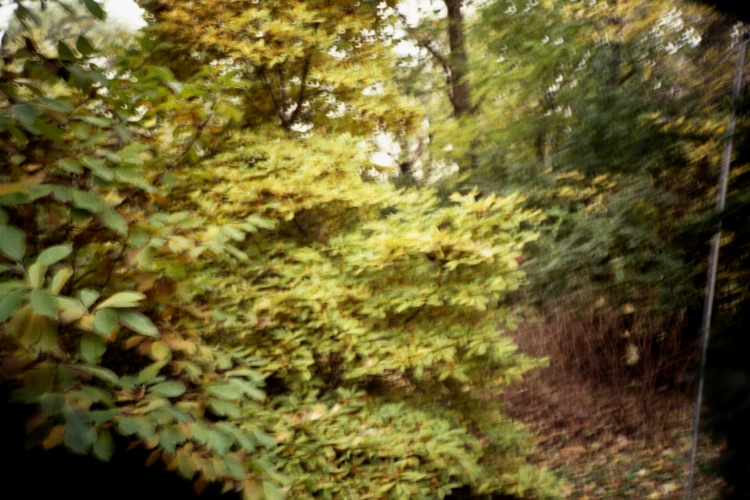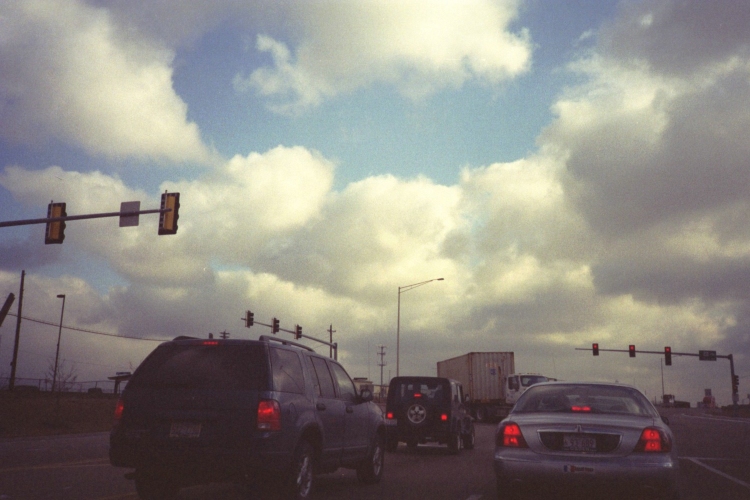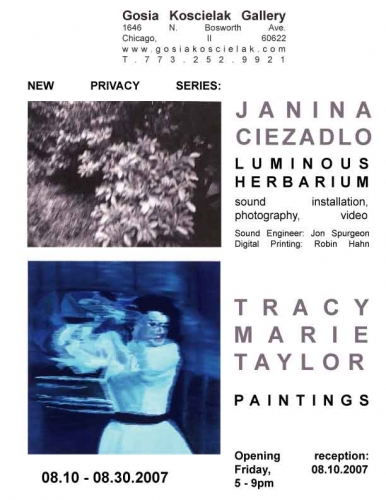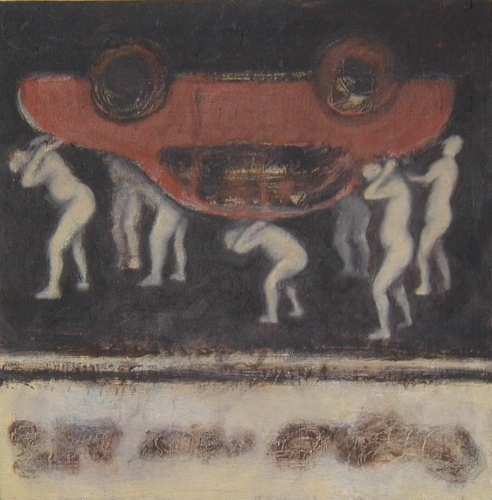Upcoming Events
The title of the installation Luminous Herbarium is allusive in many ways. Luminous refers to photography and video with reference to light, a herbarium is a collection of flora; the word can refer to the collection or the room, building or case for keeping the collection. I use the word in connection with the photographs: photos, books and poems are a way of recording, recollecting and categorizing. We read installations in the same way we read poetry, juxtaposition is key. The healing and cleansing aspects of nature are another thread in the group of themes making up this installation. On one level the work is complex and arcane, on another, it is poetic documentation of life in the suburbs of Chicago, the mid western seasons, the patterns of working class life in the millennium. A sense of place has always been a primary subject of my work.
The polarities of these images: garden and the gridlocked road evoke the contradictions of suburbia: its lush beauty and privacy and the ecological, psychological and cultural costs of getting there. I have tried to not only represent the space created by a garden, but to use photographs which, I hope, extend the genre of landscape beyond pictorialism, at the same time preserving the visual richness and evoking (and questioning landscape conventions) traditions of nature and landscape photography. The video is non-narrative, and minimalist, my goal is to give a sense of the vast and degraded spaces of dense unrelenting traffic that encircle our green spaces. Almost no one represents commuting and yet is it the central fact of many of our daily lives and the engine of our economy. Chicago has some of the longest commutes in the country. I am grateful for the generous help I received from Silvia Malagrino when I ran into technical difficulties.
The sound piece contributes to the definition of space. It is based on readings from the books
on display. Although it is a polyphonic multi-track mix, the piece is fairly abstract: rhythm, tonality and texture of the voices, are more important than the actual words. Language is always part of the human landscape. It was wonderful to work with Jon Spurgeon who recorded and mixed the voice tracks; he was able to read my mind and produce exactly the sound I wanted.
The polarities of these images: garden and the gridlocked road evoke the contradictions of suburbia: its lush beauty and privacy and the ecological, psychological and cultural costs of getting there. I have tried to not only represent the space created by a garden, but to use photographs which, I hope, extend the genre of landscape beyond pictorialism, at the same time preserving the visual richness and evoking (and questioning landscape conventions) traditions of nature and landscape photography. The video is non-narrative, and minimalist, my goal is to give a sense of the vast and degraded spaces of dense unrelenting traffic that encircle our green spaces. Almost no one represents commuting and yet is it the central fact of many of our daily lives and the engine of our economy. Chicago has some of the longest commutes in the country. I am grateful for the generous help I received from Silvia Malagrino when I ran into technical difficulties.
The sound piece contributes to the definition of space. It is based on readings from the books
on display. Although it is a polyphonic multi-track mix, the piece is fairly abstract: rhythm, tonality and texture of the voices, are more important than the actual words. Language is always part of the human landscape. It was wonderful to work with Jon Spurgeon who recorded and mixed the voice tracks; he was able to read my mind and produce exactly the sound I wanted.

